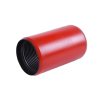- Afrikaans
- Albanian
- Amharic
- Arabic
- Armenian
- Azerbaijani
- Basque
- Belarusian
- Bengali
- Bosnian
- Bulgarian
- Catalan
- Cebuano
- Corsican
- Croatian
- Czech
- Danish
- Dutch
- English
- Esperanto
- Estonian
- Finnish
- French
- Frisian
- Galician
- Georgian
- German
- Greek
- Gujarati
- Haitian Creole
- hausa
- hawaiian
- Hebrew
- Hindi
- Miao
- Hungarian
- Icelandic
- igbo
- Indonesian
- irish
- Italian
- Japanese
- Javanese
- Kannada
- kazakh
- Khmer
- Rwandese
- Korean
- Kurdish
- Kyrgyz
- Lao
- Latin
- Latvian
- Lithuanian
- Luxembourgish
- Macedonian
- Malgashi
- Malay
- Malayalam
- Maltese
- Maori
- Marathi
- Mongolian
- Myanmar
- Nepali
- Norwegian
- Norwegian
- Occitan
- Pashto
- Persian
- Polish
- Portuguese
- Punjabi
- Romanian
- Russian
- Samoan
- Scottish Gaelic
- Serbian
- Sesotho
- Shona
- Sindhi
- Sinhala
- Slovak
- Slovenian
- Somali
- Spanish
- Sundanese
- Swahili
- Swedish
- Tagalog
- Tajik
- Tamil
- Tatar
- Telugu
- Thai
- Turkish
- Turkmen
- Ukrainian
- Urdu
- Uighur
- Uzbek
- Vietnamese
- Welsh
- Bantu
- Yiddish
- Yoruba
- Zulu
casing and tubing connections
Casing and Tubing Connections Essential Components of Oil and Gas Operations
In the oil and gas industry, casing and tubing connections play a crucial role in ensuring the structural integrity and operational efficiency of wells. These connections are integral to the drilling process and the overall functionality of production systems. Understanding the types of connections, their characteristics, and their applications can significantly impact the success of drilling operations.
What are Casing and Tubing?
Casing refers to a series of steel pipes that are inserted into the wellbore after drilling to stabilize the well and prevent the surrounding rock from collapsing. Casing also isolates the various fluid zones, preventing unwanted fluid migration between different geological formations. It acts as a barrier, protecting groundwater resources and maintaining well integrity.
Tubing, on the other hand, is a smaller diameter pipe placed inside the casing through which the oil or gas is transported to the surface. Tubing is designed to withstand higher pressures than casing and is replaced more frequently due to wear and tear from the flow of production fluids.
Types of Connections
Casing and tubing connections can be classified mainly into two categories threaded connections and welded connections.
1. Threaded Connections Threaded connections involve male and female threads that allow for easy connection and disconnection. This type of connection is prevalent due to its convenience and ability to maintain a strong seal under pressure. While threaded connections can provide a reliable link, they may also be susceptible to issues such as galling, where the friction between the threads increases wear and can potentially lead to premature failure.
2. Welded Connections Welded connections involve the physical joining of two pipe sections through welding. This method is often used where maximum strength and pressure integrity are required. Welded connections provide a seamless bond, which can better withstand environmental stressors and pressures. However, they require more time and specialized equipment for installation, making them less convenient for frequent adjustments or maintenance.
casing and tubing connections

Importance of Proper Connections
The integrity of casing and tubing connections is paramount to the safety and efficiency of oil and gas operations. A failure in these connections can lead to catastrophic consequences, including blowouts, leaks, and environmental contamination. Therefore, careful consideration of materials, design, and installation methods is necessary when selecting casing and tubing connections.
The choice of connection type often depends on various factors, including well depth, the type of fluid being transported, and environmental conditions. For instance, deep-water drilling operations may favor welded connections due to their increased pressure capabilities, while onshore operations might opt for threaded connections for ease of maintenance.
Innovations and Advancements
Recent advancements in technology have led to the development of innovative casing and tubing connection designs that enhance operational efficiency and safety. For example, high-strength materials and advanced manufacturing processes have improved the performance of threaded connections, making them more reliable in high-pressure applications.
Additionally, the introduction of premium connections has revolutionized the industry. Premium connections feature enhanced sealing capabilities and stress distribution designs that help prevent failure under extreme conditions. These connections often come with proprietary profiles that offer superior performance compared to standard options, thereby improving overall well reliability.
Conclusion
Casing and tubing connections are vital components of oil and gas operations, influencing the productivity and safety of drilling and production activities. As the industry continues to evolve, advancements in connection technology will further enhance the efficiency and safety of operations. Professionals in the field must remain well-informed about the latest developments in casing and tubing technologies to optimize their drilling strategies and ensure a sustainable future for oil and gas production. Emphasizing quality in casing and tubing connections is not just a matter of compliance; it's essential for safeguarding resources, the environment, and human lives.
-
Tubing Pup Joints: Essential Components for Oil and Gas OperationsNewsJul.10,2025
-
Pup Joints: Essential Components for Reliable Drilling OperationsNewsJul.10,2025
-
Pipe Couplings: Connecting Your World EfficientlyNewsJul.10,2025
-
Mastering Oilfield Operations with Quality Tubing and CasingNewsJul.10,2025
-
High-Quality Casing Couplings for Every NeedNewsJul.10,2025
-
Boost Your Drilling Efficiency with Premium Crossover Tools & Seating NipplesNewsJul.10,2025







